Artist Apollonius of Athens | ||
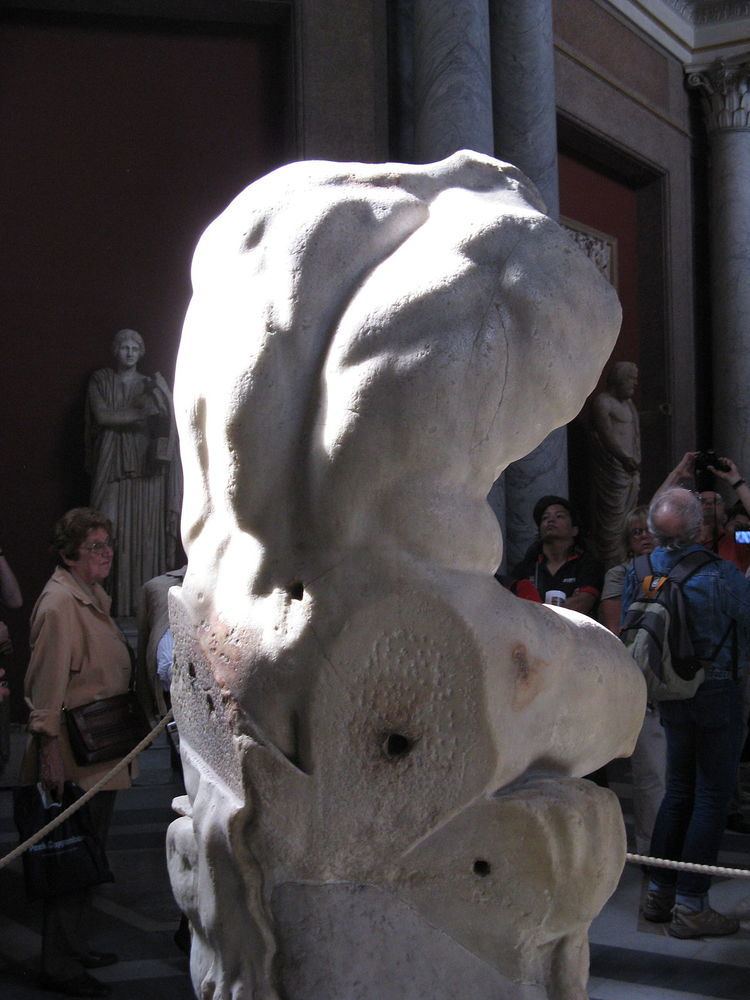 | ||
Similar Laocoön and His Sons, Apollo Belvedere, Apoxyomenos, Farnese Hercules, Doryphoros | ||
Belvedere torso vatican museum
The Belvedere Torso is a fragment of a nude male statue, signed prominently on the front of the base by "Apollonios, son of Nestor, Athenian", who is unmentioned in ancient literature. It is now in the Museo Pio-Clementino (Inv. 1192) of the Vatican Museums. It is a marble torso. According to the Vatican Museums website "the most favoured hypothesis identifies it with Ajax, the son of Telamon, in the act of contemplating his suicide".
Contents
- Belvedere torso vatican museum
- Figure drawing tips demo belvedere torso on toned paper
- History after rediscovery
- References

The figure has traditionally been identified as a Heracles, seated on an animal skin, though in recent studies, the skin has been identified as that of a panther, not the Nemean lion, occasioning other identifications.

It was once believed to be a 1st-century BC original, but is now believed to be a copy from the 1st century BC or AD of an older statue, which probably dated to the early 2nd century BC. The statue's figure is portrayed seated on an animal hide; the exact figure represented remains open to debate (possibilities include Hercules, Polyphemus and Marsyas, among others).
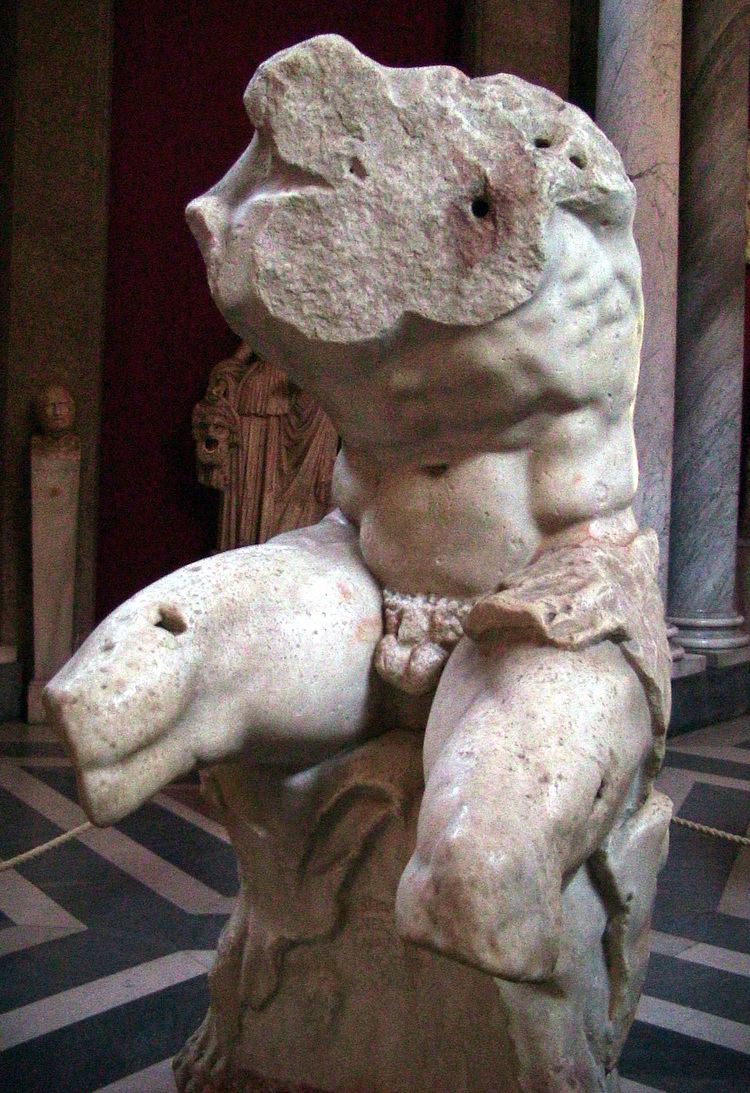
The contorted pose of the torso and musculature were highly influential on late Renaissance, Mannerist, and Baroque artists, including Michelangelo and Raphael. Michelangelo's admiration of the Torso was widely known in his lifetime, to the extent that the Torso gained the sobriquet, "The School of Michelangelo"
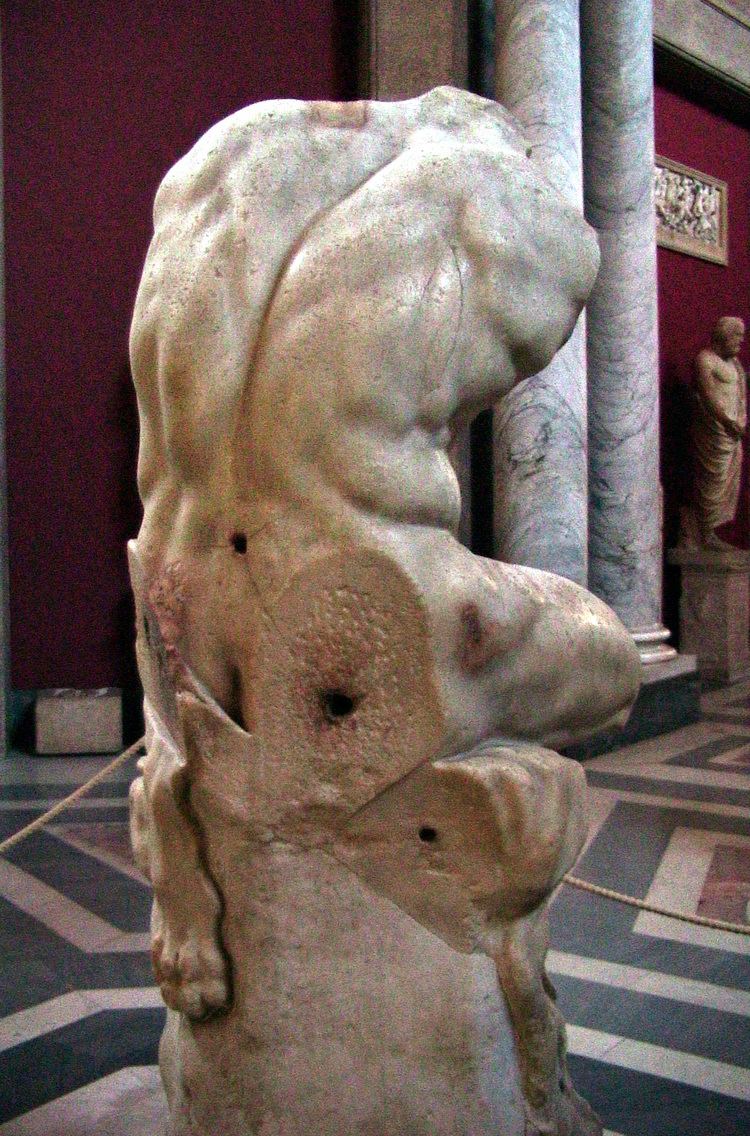
Legend has it that Pope Julius II requested that Michelangelo complete the statue fragment with arms, legs and a face. He respectfully declined, stating that it was too beautiful to be altered, and instead used it as the inspiration for several of the figures in the Sistine Chapel, including the Sibyls and Prophets bordering the ceiling. The Belvedere Torso remains one of the few ancient sculptures admired in the 17th and 18th centuries whose reputation has not suffered in modern times.
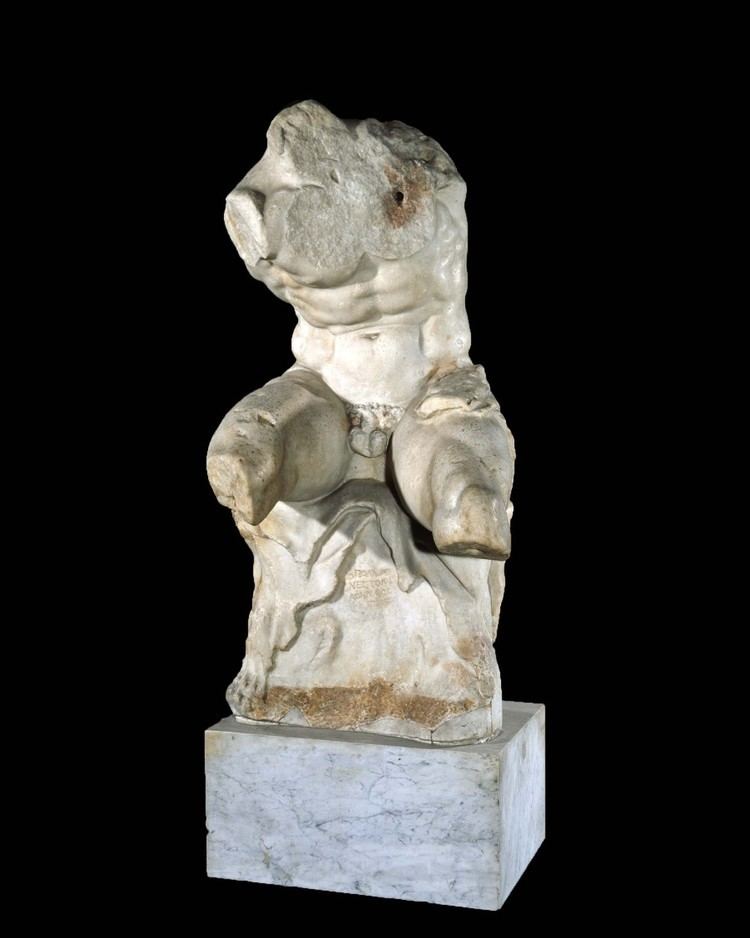
Figure drawing tips demo belvedere torso on toned paper
History after rediscovery
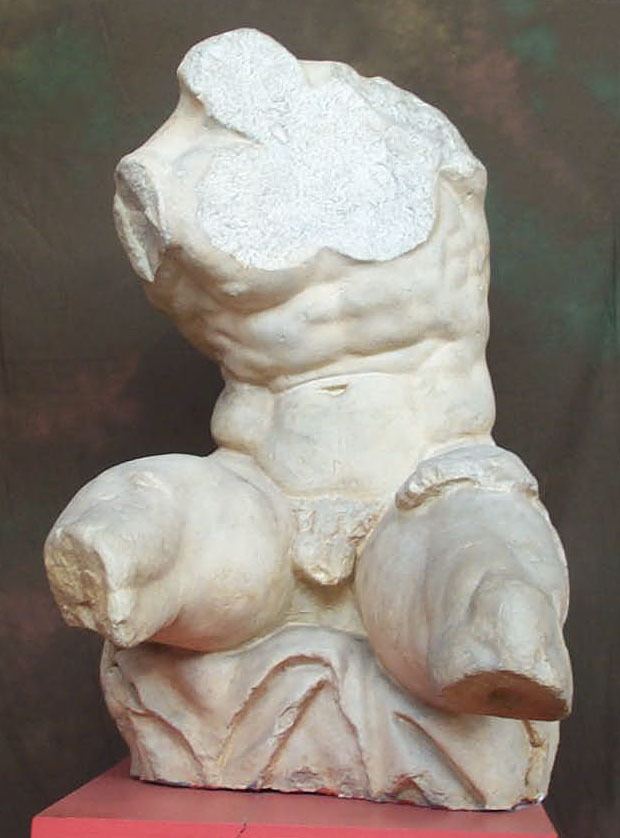
The statue is documented in the collection of Cardinal Prospero Colonna in Monte Cavallo, Rome from the 1430s, not because it elicited admiration but because an antiquarian epigrapher, Ciriaco d'Ancona (or someone in his immediate circle) made note of its inscription; a generation later it began its career as a catalyst of the classical revival. Early drawings of the Torso were made by Amico Aspertini, ca 1500–03, by Martin van Heemskerck, ca. 1532–36, by Hendrick Goltzius, ca 1590; the Belvedere Torso entered the visual repertory of connoisseurs and artists unable to go to Rome through the engraving of it by Giovanni Antonio da Brescia, ca 1515. Around 1500 it was in the possession of the sculptor Andrea Bregno. It was in Palazzo Colonna at the Sack of Rome in 1527, when it suffered some mutilation.
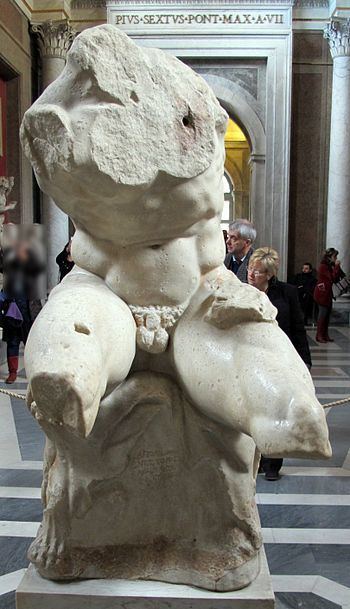
How it entered the Vatican collections is uncertain, but by the mid-16th century it was installed in the Cortile del Belvedere, where it joined the Apollo Belvedere and other famous Roman sculptures. "The Laocoön took two months from unearthing to Belvedere canonization," Leonard Barkan observed, "the Torso took a hundred years."
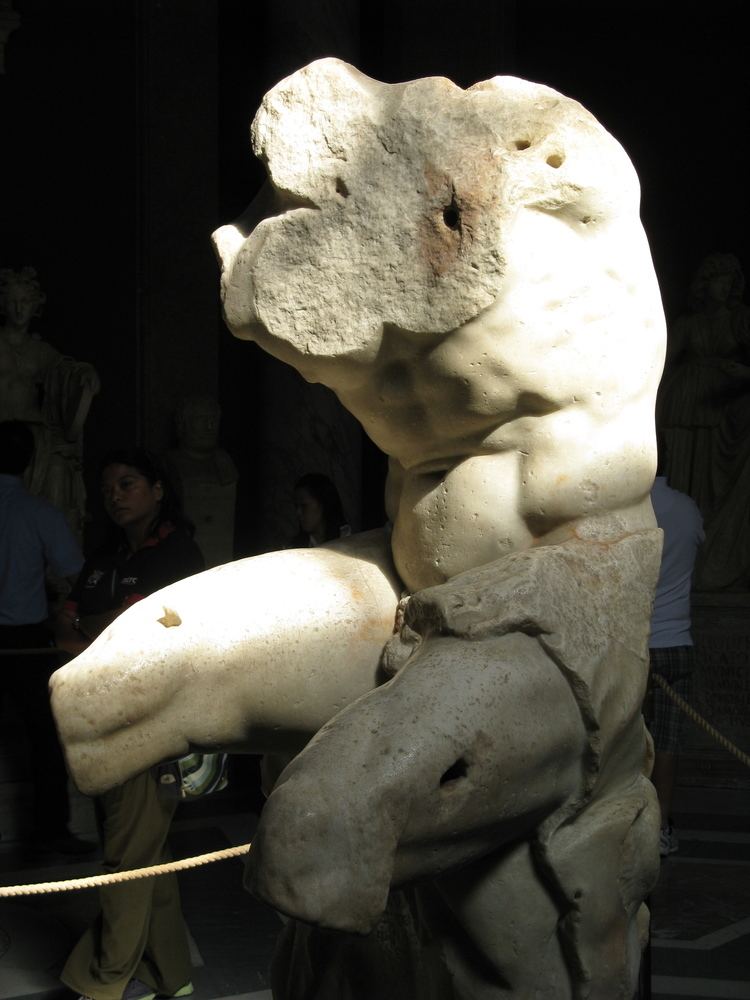
Several small bronze reductions of it were made during the 16th century, often restoring it as a seated Hercules.
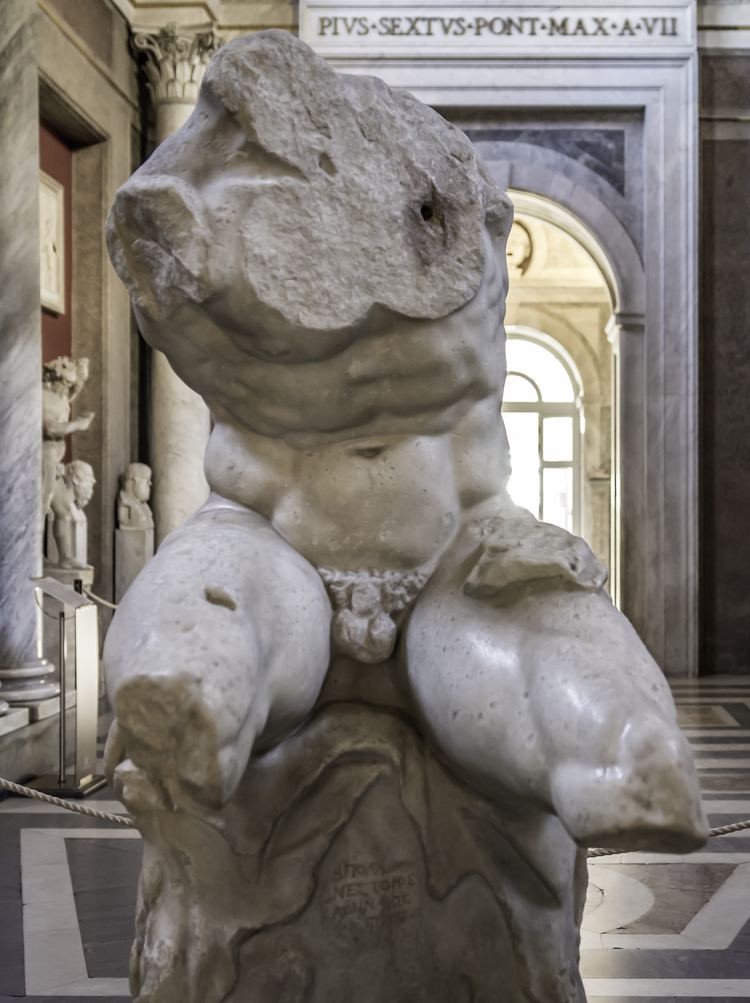
The Belvedere Torso visited the British Museum for their 2015 exhibition on the human body in ancient Greek art.

